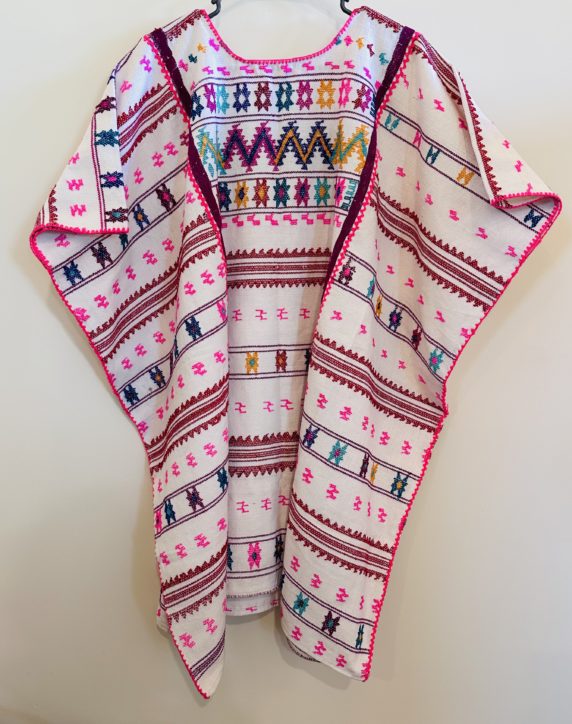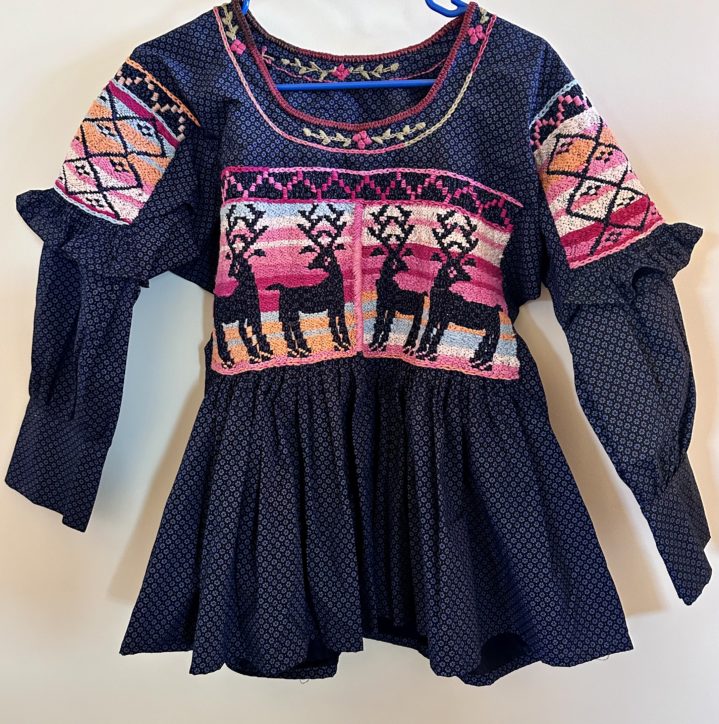Today was the first of two Sundays when the Zapotec village of San Juan Guelavia holds its annual basket fair. Next Sunday, February 2, is the last day. They open in the compact zocalo at 9 a.m. By the time we got there, close to noon, there wasn’t much left. Before I could say basket, two that caught my eye were snatched up from under my outstretched arm.
The bamboo used to make the baskets is picked young and green, much easier to manipulate. Then, it is washed and stripped. After the basket is complete, the sturdy handles are wrapped with palm leaves. Most of the Zapotec women in the central valleys of Oaxaca prefer these baskets for daily shopping use. The handle fits easily over the crook of the elbow, is smooth and comfortable.
Both men and women are basket weavers. They are also makers of corn husk flowers, lamp shades, bird cages, decorative woven bottle coverings, and traditional storage baskets for maize.
Some of the workmanship is so fine, one wonders how fingers can weave the course strips of bamboo, let alone strip the cane and prepare it for the weaving process. The basket I bought is above, left, held by the weaver who made it. He was happy and so was I.
Basketmaking in San Juan Guelavia, Oaxaca is a craft in decline and I have included this link to an academic paper that references San Juan Guelavia and their struggle to keep this craft tradition alive.
I hope you get to the Feria (fair) next Sunday. I paid 140 pesos for a beautiful handmade basket, quite large. That’s about $11 USD. A day’s wage here in Oaxaca. Who knows how long it took to make! Looks like more than a day to me. A basket this size for sale at the Tlacolula market would cost double the price, maybe more, and still a bargain at that!
In addition to the baskets, there is lots of home-style cooked food like quesadillas, tamales, and hot steamed corn-on-the-cob. Come and linger.
Where to Find San Juan Guelavia: From Oaxaca City, take any bus or colectivo taxi heading to Tlacolula or Mitla. Get off at the San Juan Guelavia crossroads (which is about 1/2 mile before you get to Teotitlan del Valle, and maybe five miles beyond El Tule). There are village taxis and tuk-tuks that will take you along the beautiful curving road that leads to the village, set about three miles off the Panamerican Highway 190, nestled in the rolling foothills of the Sierra Madre del Sur.


































































International Priests Visit Teotitlan del Valle, Oaxaca
The firecrackers call in early afternoon to announce that something spectacular was about to happen in the village later that day. It’s filled with surprises here. My neighbor Ernestina comes over in the morning to offer me 20 fresh, creamy chicken and mole amarillo tamales for 100 pesos.
Then, later tamales are served for lunch at the guest house where the felt fashion workshop participants assemble. It is not yet Dia de la Candelaria, when everyone eats tamales. What is going on? I wonder.
At six-thirty, the young men atop the bell tower ring the church bells. Rosario and Josefina say goodbye. Where are you going? A la iglesia. To the church, they say. There’s a fiesta to welcome 30 visiting priests from Columbia, China, Nueva York (New York), California and India. I follow the sound of the bells to the church courtyard.
Nearly the entire village gathers. I arrive just in time to be offered a fresh, steaming hot tamale, to see the children dressed in Dance of the Feather plumage dancing the re-enactment of the conquest, to hear the band play, and to see banquet tables filled with men who sip hot chocolate and eat tamales, served by traditionally dressed village women.
I hear that more than a thousand tamales are made that day by the women chosen to the traditional, pre-Hispance Jarabe del Valle dance. They are part of the church committee that supports the village festivals.
A master’s of ceremonies talks about cultural exchange, the many Zapotecs from this village who live and work and practice their traditions in towns throughout southern California, and how these priests help people to adapt, acclimate and stay connected to their roots. The Spanish is sprinkled with a little English to make the visitors more welcome.
Then, the women, holding branches of fragrant herbs welcome the guests to join them for the Jarabe del Valle. The men, towering above them, move their feet to the rhythm of the dance and catch on quickly.
The band played on.
Like this:
Comments Off on International Priests Visit Teotitlan del Valle, Oaxaca
Posted in Cultural Commentary, Teotitlan del Valle, Travel & Tourism
Tagged fiestas, Mexico, Oaxaca, tamales, Teotitlan del Valle